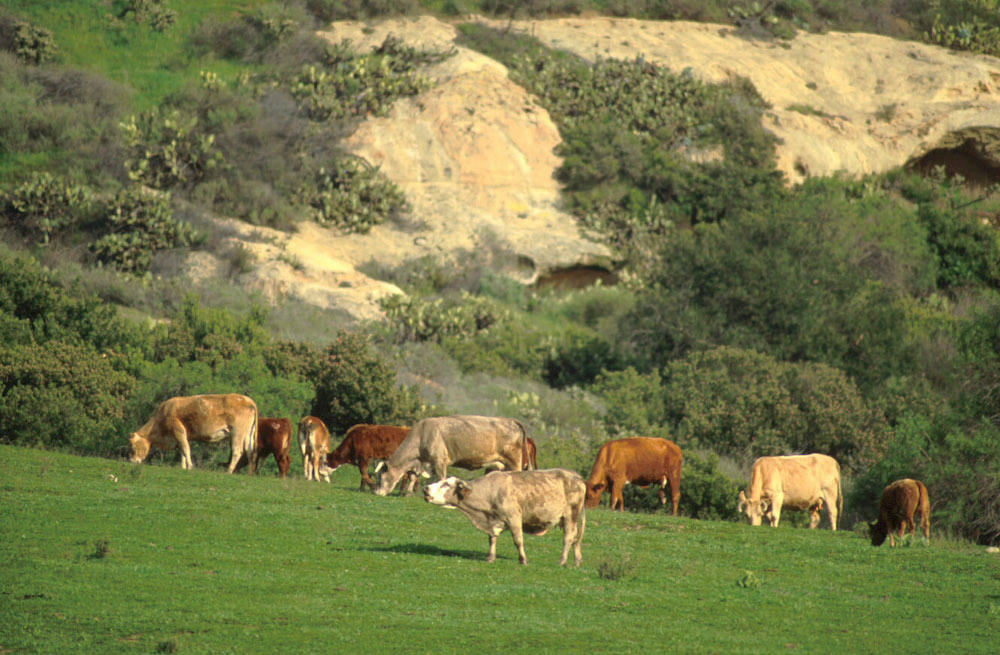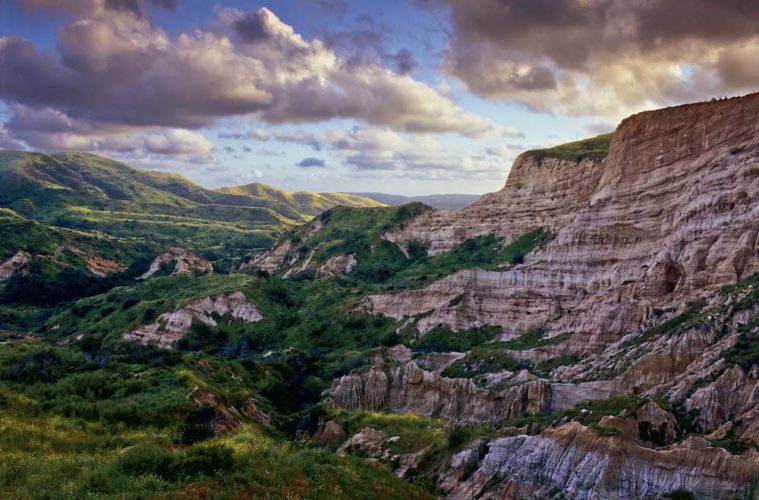Earth Day celebrations this April at local nonprofit Irvine Ranch Conservancy (IRC) were marked with the recognition of two historic moments in the organization’s contributions to the area: the anniversaries of the city of Irvine’s Open Space Initiative and the designation as the first-ever California Natural Landmark. What many may not know is that the Irvine Ranch Natural Landmarks, which comprise a significant part of the native habitats found in Orange County, was once one of the state’s earliest and most productive large-scale agricultural enterprises.
“Much of the land was in agriculture and ranching from before the beginning of the 20th century and it continued that way for over 100 years,” said IRC president and CEO Michael O’Connell in a recent press release on the occasion. “It is really only in the last 35 years or so that the undeveloped land changed from ranching to protected natural open space.”

Bommer Canyon (Courtesy of Irvine Ranch Conservancy)
While original plans for the area only accommodated for about 10 percent of open land, this was later upped to more than 50 percent, the results of which current residents of Irvine and Orange County can enjoy, and are maintaining and conserving for future generations. One of the primary reasons for that increase was the efforts of locals to protect the land from further development via the Irvine Open Space Initiative passed by voters on Earth Day 1988.
Another was the development of a conservation plan under the Endangered Species Act called the Natural Community Conservation Plan, which identified and provided for the regional protection of plants, animals and their habitats while allowing compatible and appropriate economic activity. Celebrating the spirit of Earth Day while honoring local shelter in place advisories, Irvine Ranch social media channels looked back at the history of the lands to educate area residents.
IRC was founded in 2005 to ensure these protected lands were cared for and enjoyed in perpetuity. The next year, nearly 40,000 acres of open space was designated a National Natural Landmark by the U.S. National Park Service, and the state of California designated the same lands as the first California Natural Landmark on Earth Day in 2008. Both designations required exhaustive, independent peer-reviewed scientific evaluation by a team of academic scientists.

West San Gabriel River Trail (Courtesy of IRC)
Although there are more than 600 designated National Natural Landmarks in the U.S., the Irvine Ranch is the only place to receive this honor for both its biology and geology. To learn more about the history of the land frequented by the community, visit Irvine Regional Park, where interpretive signage provides more details. There are also signs at trailheads and staging areas on Quail Hill and Orchard Hills that share about the agricultural history of the Irvine Ranch.
Signage at Bommer Canyon at the cattle camp area talks about the history of the area as a cattle ranching operation. The Waterworks trail that heads into Weir Canyon explores some of the history of agriculture in this region through the lens of all the old water irrigation equipment that’s still there. Clearly, there’s a lot to see and learn if you want to when you’re actually out on the land once again.
Meanwhile IRC has quite a few projects in the works at the moment at different stages of completion. “Most typically are 10-year projects. We have a few of those that are in various stages like Bee Flat Canyon, which is part of Limestone Canyon, and Agua Chinon on Silverado Canyon,” says communications manager Scott Graves. One of the new projects IRC is working on is trying to bolster the coast live oak population by planting hundreds of acorns and little tree tubes to grow them into little seedlings.
Once they start to sprout sometime in the fall, and provided outdoor activities can recommence, the public can help plant them throughout Limestone Canyon. “It’s a project that the public and our volunteers can get involved with and see it from seed to tree. For years to come, they’ll be able to hike through Limestone Canyon and see one of the trees that they planted, and how it supports the local wildlife,” shares Graves.
Admittedly, the “pandemic pause” has brought its positives too. “If there’s any silver lining to what’s happening right now, with the stay at home orders and the pandemic, is we’ve been able to bring some backburner projects to the front,” he says. “We are able to spend really good quality time analyzing data that has been collected over the last few years to evaluate the progress on various restoration works or how successful different activities are.”
Looking toward the future, IRC will continue its mission to restore more than 5,000 acres of native habitat and grow a community of active, engaged supporters. On plans for reopening post COVID-19, Graves says, “People can expect things to be different, especially at first. It’s going to be a learning process for us as we try to figure out the best and safest ways to get people to enjoy the land responsibly. Nothing yet is decided. However, the land hasn’t changed. The trails haven’t changed. It just might look a little different.”
To learn more about Irvine Ranch Conservancy and the Irvine Ranch Natural Landmarks visit IRConservancy.org.

Black Star Canyon hike (Courtesy of Irvine Ranch Conservancy)
Advertising disclosure: We may receive compensation for some of the links in our stories. Thank you for supporting Irvine Weekly and our advertisers.

